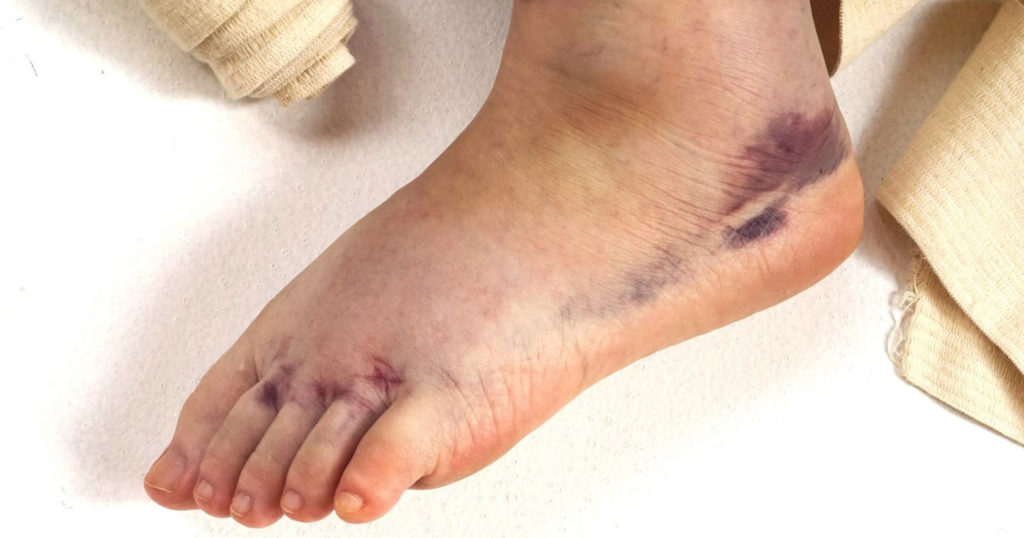A sprained ankle common both within and outside of sport
If you’ve ever had an ankle sprain, you would know how painful and debilitating they can be? You’re definitely not alone as ankle sprains comprise of up to 10-20% of all sports injuries, and are one of the most common injuries both within and outside of sport.
Depending on the severity, ankle sprains can be quite impairing and can often interfere with daily living. Luckily, there is plenty your podiatrist can do to help!
What is an ankle sprain?
An ankle sprain occurs when the ligaments of the ankle get damaged or overstretched with stress. Ligaments are the fibrous structures that connect bones and provide stability and strength to the joints. The ligaments itself can be damaged, or in severe ankle sprains the ligaments can pull fragments of bone with it causing an avulsion fracture. Ankle sprains can vary in severity from a mild “rolled ankle” to severe complete ligament ruptures, avulsion fractures or broken bones.
What causes an ankle sprain?
Most ankle sprains occur on the outside of the foot – known as an ‘inversion ankle sprain’, which will occur when stress is placed on a foot that is rolled outwards. The extreme force causes damage to the outside ligament structures.
This type of injury will mostly occur from:
- Unstable surfaces
- Sports with constant changes of direction ie. netball, football, basketball, soccer, tennis
- Poor strength & stability in the muscles & ligaments surrounding the ankle.
What are the symptoms of an ankle sprain?
What types of lateral ankle sprains are there?
From assessing the ligaments damaged through objective measures and imaging, we can grade ankle sprains from 1-3 depending on the severity. If your sprain does require imaging, it is normally an ultrasound, but sometimes requires both an x-ray and ultrasound.
- Grade 1: Occurs when there is a slight tearing of the ligament. Mild tenderness and stiffness occurs. This is commonly referred to as a “rolled ankle” and you should be able to return to activities in a short timeframe.
- Grade 2: Involves a larger tear, but the ligament is still intact. You may experience moderate pain, swelling and stiffness. Hobbling or limping is common for a few days before the ankle starts to feel better. Appropriate rehab protocols should take place before returning to sport.
- Grade 3: A complete tear or rupture of the lateral ligaments. Severe swelling, pain and bruising will occur. You may not be able to bear any weight afterwards. A thorough rehab program is required before returning to sport.
What can be done to manage an ankle sprain?
We recommend
visiting a physiotherapist or podiatrist within the first 48 hours to assess and determine the severity of your ankle sprain. For the first few days, the RICE protocol is recommended (Rest, Ice, Compression, Elevate) to reduce pain and swelling. Following this, there are a number of treatment options your podiatrist may implement:
- Exercise therapy: A specific exercise program to build back the strength and tolerance around your ankle
- Footwear recommendations
- Orthotic therapy
- Strapping and taping strategies
- Shockwave therapy
- Soft tissue release work
If you have recently suffered an ankle sprain or have been dealing with
chronic ankle instability, be sure to book an appointment with The Movement Centre today. Our podiatrists are experts at managing foot & lower leg conditions and will happily assist to get you back on your feet!



